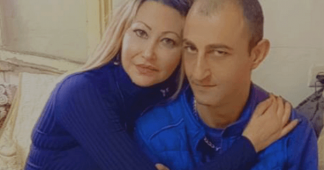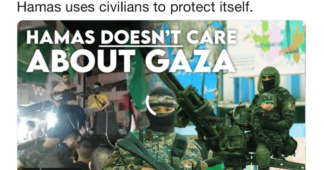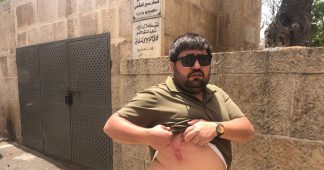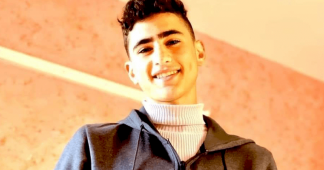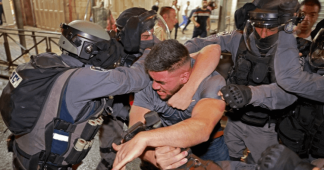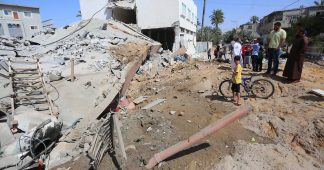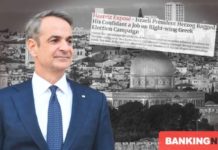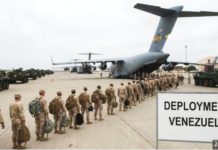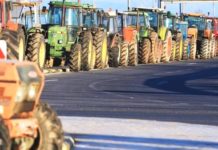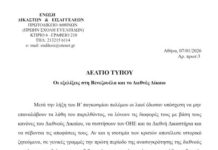5 December 2021
Naftali Bennett praised the execution of a Palestinian who was lying on the ground by paramilitary police near Damascus Gate in Jerusalem on Saturday.
The Israeli prime minister gave the officers his “full backing.”
“That is how our forces are expected to act and that is how they acted,” Bennett added.
Bennett’s comments demonstrate his commitment to Israel’s shoot-to-kill policy against Palestinians that intensified during the last several years of his predecessor Benjamin Netanyahu’s tenure.
After a streak of street executions of suspected Palestinian attackers in late 2015, the Israeli human rights group B’Tselem blamed Netanyahu for “the transformation of police officers, and even of armed civilians, into judges and executioners.”
The shooting death of Muhammad Salima, 25, as he lay on the ground and posed no immediate danger generated unusual controversy over the execution of a Palestinian after eyewitness video circulated online on Saturday.
That 23-second video, recorded from a bystander’s vehicle, shows two Israeli Border Police officers firing at Salima from a distance as he lay on the ground and posed no threat to anyone’s life.
شرطة الاحتلال الإسرائيلي تطلق النار على شاب فلسطيني في #باب_العامود. #فلسطين pic.twitter.com/nhmCde3to0
— قناة الميادين (@AlMayadeenNews) December 4, 2021
A 50-second video clip was later released by the Israeli police showing the events leading up to Salima’s execution.
The stabbing attack today at Damascus Gate in Jerusalem pic.twitter.com/BiomqC27wA
— Israel Police (@israelpolice) December 4, 2021
Israel releases such footage when it thinks it bolsters its narrative of events but in countless other cases, such as the execution of Iyad Hallaq in Jerusalem last year, it prevents video from being made public.
The video released by Israeli police on Saturday appears to show Salima walking across a street when he turns around and stabs a man in ultra-Orthodox dress.
The video shows Salima grabbing and lunging at the ultra-Orthodox man, identified as Avraham Elimelich, for a few seconds before two Border Police officers arrive and Salima runs towards them.
The video appears to show Salima lunging at one of the officers and then standing several meters away from either of them when he is apparently shot in the leg by one of the officers and falls to the ground.
Then the clip released by police, which contains no audio, shows from another angle the additional two shots that are more clearly seen and heard in the eyewitness video.
The Israeli police video also shows at least three other armed Israeli officers quickly arriving on the scene.
The man allegedly stabbed by Salima sustained moderate to severe wounds, according to Israeli media.
“Confirm the kill” policy
Israeli forces operate under a “confirm the kill” policy exposed in a military court hearing following the 2004 shooting death of 13-year-old Iman al-Hams by soldiers in southern Gaza.
More than a decade later, that horrific practice generated widespread outcry after a video published by B’Tselem showed Israeli army medic Elor Azarya shooting at a prone Palestinian in Hebron.
According to writer Richard Silverstein, Azarya had asked his commander for permission to “confirm the kill” before firing at Abd al-Fattah Yusri al-Sharif.
Azarya served a nine-month prison sentence in what was at once a lenient punishment and a rare instance of an Israeli soldier being held accountable for a Palestinian’s death.
The killer medic is hailed as a hero in Israel and the government has moved to criminalize the filming of Israeli soldiers as part of a wider effort to maintain impunity over abuses against Palestinians.
The Palestinian Boycott, Divestment and Sanctions National Committee called on the International Criminal Court to “stop delaying charges against enablers of Israeli apartheid” following the execution of Salima.
Israel's apartheid forces carried out an extrajudicial execution in illegally occupied E. Jerusalem. An already incapacitated Palestinian man was shot to death as he lay on the ground. @intlCrimCourt must stop delaying charges against enablers of Israeli apartheid.#ICC4Israel https://t.co/Emeq0Ooj07
— BDS movement (@BDSmovement) December 5, 2021
Other observers noted that an Israeli man who stabbed several people during a Gay Pride parade in Jerusalem was not executed in the street:
Yishai Schlissel carried out TWO separate stabbings in which 9 people were knifed, killing one Jewish Israeli and STILL was not killed in cold blood. Save the talking points. #context pic.twitter.com/z2a9dujejR
— Good Shepherd Collective (@Shepherds4Good) December 4, 2021
In that 2015 incident, Yishai Shlissel attacked parade-goers, killing a teen and wounding five others, weeks after being released from 10 years of imprisonment for a similar attack.
Extrajudicial executions
B’Tselem described the shooting death of Salima as a summary execution.
Contrary to the sanitized terminology Israeli authorities and media use, the assailant wasn’t “neutralized”. He was summarily executed. https://t.co/SexgNAAsvf
— B'Tselem בצלם بتسيلم (@btselem) December 4, 2021
The UN Human Rights Office in Palestine stated that it was “shocked by the apparent extrajudicial execution” of Salima.
“Extrajudicial killings such as this are the consequence of the regular resort to lethal force by well-armed and well-protected Israeli security personnel against Palestinians, and the almost total lack of accountability for killings and injuries of Palestinians by Israeli forces,” the UN office added.
Israeli leaders rallied around the Border Police officers who executed Salima, with police commissioner Kobi Shabtai proclaiming them “heroes.”
He was echoed by Border Police head Amir Cohen, who said that the “heroes … acted according to how we train them.”
On Sunday, Bennett tweeted his appreciation for the Border Police officers who “neutralized the terrorist.”
את ישיבת הממשלה היום פתחתי בדברי חיזוק ללוחם וללוחמת שניטרלו אמש את המחבל.
מגיעה לכם ההערכה של כולנו. מנעתם רצח ופעלתם בתושייה מבצעית תוך שברירי שניה בודדים – בדיוק כפי שנדרש מלוחמים במצב מבצעי כזה. >> pic.twitter.com/V62TY4PWRP— Naftali Bennett בנט (@naftalibennett) December 5, 2021
His accolades were accompanied by a photo of the two officers with their faces blurred out.
Bennett added that the video released by police and shared by Israel’s “hasbara” – or official propaganda – apparatus “turned the perception on its head,” suggesting that it was published as a form of damage control.
Israel’s justice ministry reportedly opened an investigation into Salima’s slaying but the two officers have returned to “operational duty,” according to Israeli media.
Israel’s self-investigation mechanisms have long been dismissed by human rights groups as a “fig leaf for the occupation,” as B’Tselem has put it.
That group, along with the Palestinian Center for Human Rights, issued a report earlier in the week exposing Israel’s sham investigations into the killing and maiming of protesters during Gaza’s Great March of Return.
Israeli forces and settlers have killed more than 330 Palestinians in the occupied West Bank, including East Jerusalem, and Gaza since the beginning of the year.
Occupation forces shot and killed Fadi Abu Shkheidem, 42, after he opened fire at Israelis near the Chain Gate to the al-Aqsa mosque compound in Jerusalem’s Old City on 21 November.
Eliyahu David Kay, 26, was killed. Three others, including two police officers, were injured.
Days earlier, an Israeli civilian shot and killed Omar Ibrahim Ayoub Abu Assab, 16, after the teen allegedly stabbed two Border Police officers in the Old City.
The armed civilian, identified by media as the head of a seminary founded by Ateret Kohanim, a pro-settlement organization, fired at least six shots at the boy, eyewitnesses told Defense for Children International-Palestine.
The Israeli Border Police officers sustained light to moderate wounds.
Published at electronicintifada.net
We remind our readers that publication of articles on our site does not mean that we agree with what is written. Our policy is to publish anything which we consider of interest, so as to assist our readers in forming their opinions. Sometimes we even publish articles with which we totally disagree, since we believe it is important for our readers to be informed on as wide a spectrum of views as possible.
